Abandoned concrete bunker converted into a green power plant by IBA Hamburg
This concrete Second World War bunker in Hamburg has been converted into a renewable energy plant and visitor centre by urban development company IBA Hamburg (+ slideshow).
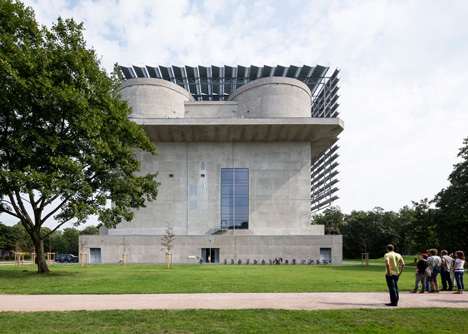
IBA Hamburg restored and expanded the 42-metre-high ruined concrete shell, which had remained unoccupied since the end of the war. Working with German energy firm Hamburg Energie, the company transformed the bunker into a plant that provides heat and electricity to the surrounding neighbourhood.
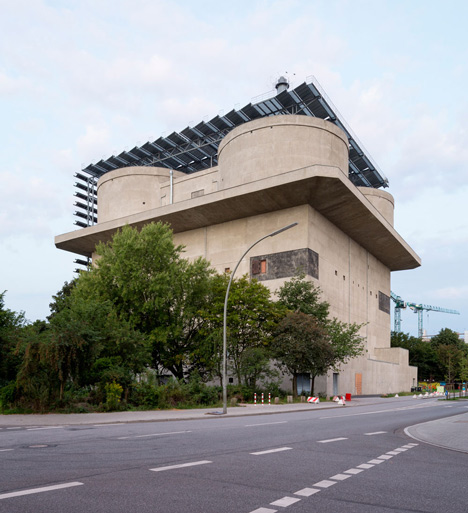
"After standing empty for more than sixty years, followed by a seven-year project development and construction phase, this war monument has been transformed into a sign of the dawn of a climate-friendly future," said IBA director Uli Hellweg.
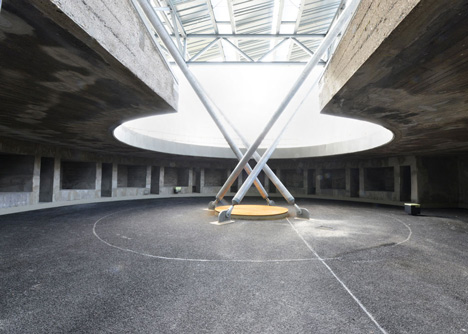
The imposing structure is circled by a balcony towards the top, above which sits four cylindrical forms at each corner that are connected by the cantilevered ledge. A public cafe that spills out onto the balcony through a glass wall and an event space were also added on the upper level.
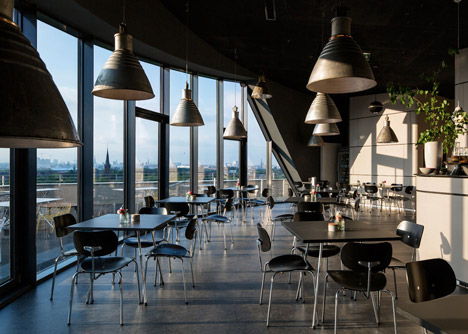
To make the building safe to occupy, concrete was sprayed onto the disintegrating facade to stabilise it and thermal insulation was added to keep the cafe warm. Inside, the bombed floor slabs were removed and replaced plus an elevator and staircases were added.
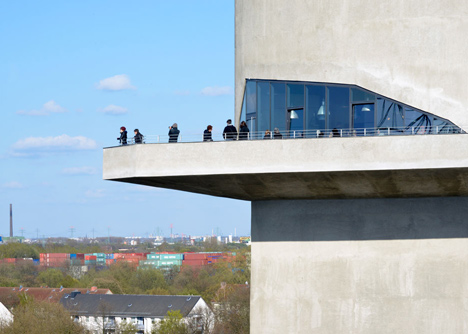
A two-million-litre water reservoir sits at the centre of the structure, acting as large heat buffer. This is fed by heat from a biomass thermal power plant, a wood burning unit, a solar thermal system on the roof and waste heat from a nearby industrial facility. The heat is redistributed to surrounding buildings in the district.
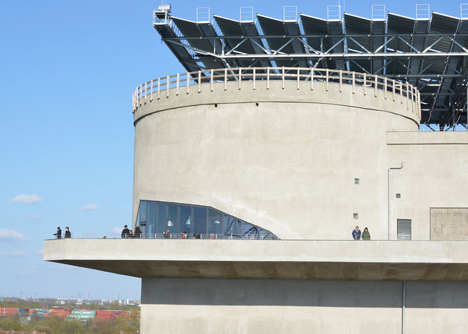
Rows of photovoltaic panels covering the south facade and a thermal power station feed power into the electricity grid. The cafe contains an interactive monitor that displays current energy production data and visitors can take guided tours around the plant.
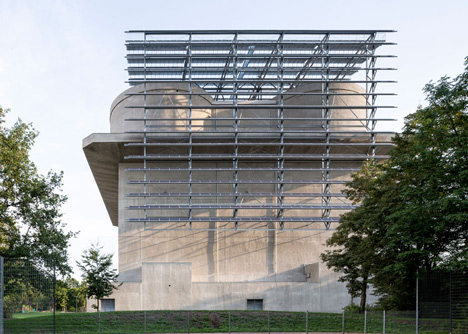
The bunker has been supplying energy to Hamburg's Reiherstieg district for a year and the public facilities opened six months ago.
Here's some more information from IBA Hamburg:
Energy Bunker: World First in Heat and Electricity Supply
From a war memorial to a green power plant: the Energy Bunker in Hamburg-Wilhelmsburg, created by HAMBURG ENERGIE and the International Building Exhibition IBA Hamburg, is the first project of its kind in the world. For exactly a year the Energy Bunker has been supplying heat energy to the residential buildings in the surrounding area. Six months ago it opened to visitors and has become a major attraction. The development of this remarkable joint project is now complete and is being celebrated with an opening ceremony and the unveiling of two plaques.
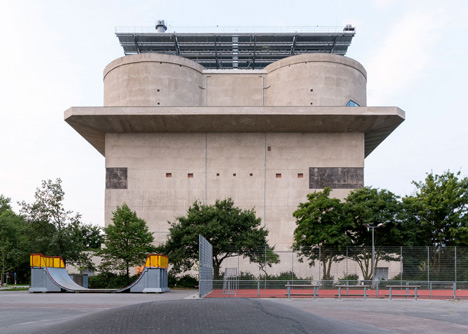
"Today we are here to mark a project that encapsulates the philosophy of the IBA Hamburg more than any other," said IBA director Uli Hellweg. "After standing empty for more than sixty years, followed by a seven-year project development and construction phase, this war monument has been transformed into a sign of the dawn of a climate-friendly future. Not only does it produce clean energy to supply the district, but also demonstrates how local resources can be used to produce and store heat. With its viewing platform, permanent exhibition, and café, the Energy Bunker also makes an appealing visitor attraction. Almost 100,000 people have visited the Energy Bunker so far."
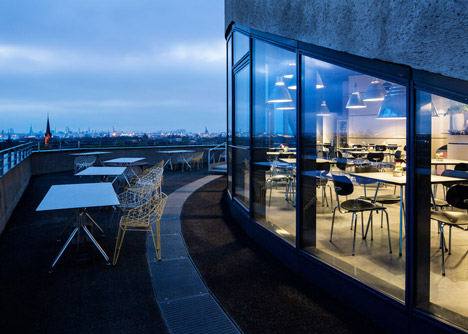
Dr Michael Beckereit, director of Hamburg Energie, said, "The Energy Bunker has been supplying heat energy since October 2012, and since March 2013 it has also been providing electricity. Its performance and network are gradually being extended. By the final stage of expansion we will be supplying 3,000 households with heat from the Bunker and generating over 2.5 million kilowatt-hours of electricity."
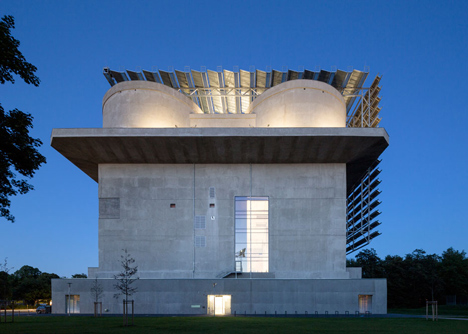
At the heart of the project is a two-million-litre water reservoir that acts as a large heat buffer inside the Energy Bunker, and serves as the centre of a local heating network for the Reiherstieg district. The reservoir is fed by the heat from a biomass thermal power plant and a wood burning unit, as well as a solar thermal system on the roof. This is supplemented by the waste heat from a nearby industrial plant. By bringing these different sources of energy together in an effective way, the Energy Bunker is able to supply the adjacent Global Neighbourhood with heat, and in future will be capable of providing heat to most of the Reiherstieg district. At the same time it feeds into the public grid green electricity from the thermal power station and the photovoltaic unit fitted to the south façade.
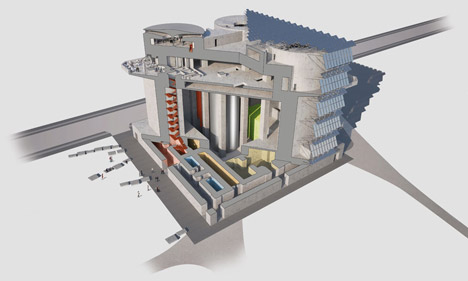
History of the Energy Bunker
The 42-metre-high flak bunker on Neuhöfer Strasse was built during World War II. After the end of the war this concrete behemoth could not be blown up without endangering nearby tenements, so the British Army restricted itself to destroying the interior. On the outside, however, the bunker remained more or less intact. From then on, the ruin stood in the middle of the residential area, largely unused and in danger of collapsing. In 2006 the conceptual planning for converting the building into an Energy Bunker began, and 2010 saw the first static tests carried out. Safety, restoration, and conversion tasks on the bunker could only begin in 2011. The total cost of the work amounted to €26.7 million. As a flagship project, it was funded by the European Regional Development Fund (ERDF) and the Hamburg Climate Protection Concept.
The clients are the IBA Hamburg (restoration and expansion of the building) and HAMBURG ENERGY (energy supply). As part of a joint opening ceremony Uli Hellweg and Dr Michael Beckereit have now unveiled the IBA plaque and the ERDF sign.